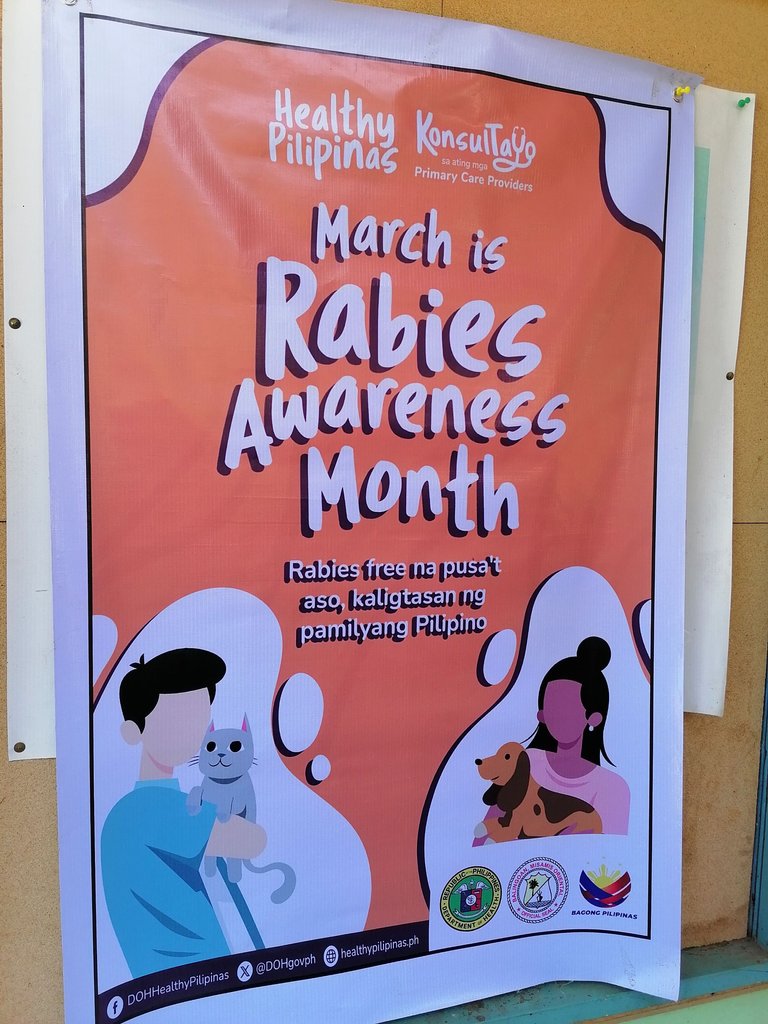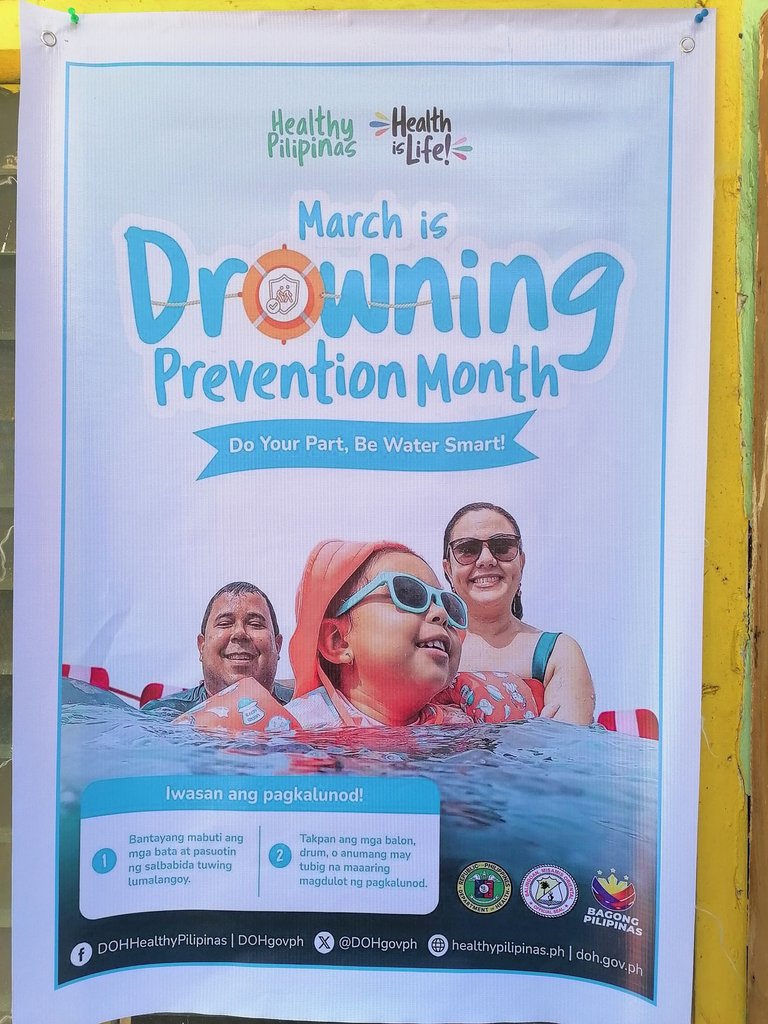RHU Staff Nurses Conducting A Brief Information About Rabies Awareness and Drowning Prevention
Hello lifescapetribes and hivers, her I am again sharing about something important today. Since "March is a Rabbies Awareness Month at the same time "Drowning Prevention Month". The RHU (Rural Health Unit)is conducting important information sessions about rabies awareness and drowning prevention in our Child Development Center. It's crucial to educate parents, caregivers, and children about these important topics to ensure their safety and well-being. We do it outside our room because our center is under a little renovation and repainting inside is ongoing.

Rabies awareness is essential in teaching children and their parents about the risks associated with stray animals and the importance of vaccinating their pets. By providing information on how to recognize and avoid potentially rabid animals, as well as the necessary steps to take in case of an animal bite, you are empowering parents and caregivers to protect their children.


Drowning prevention is another critical aspect of child safety, especially around bodies of water. By educating parents and caregivers about the importance of constant supervision, teaching children basic water safety skills, and promoting the use of life jackets, you are helping to prevent drowning incidents and promote water safety.

To help prevent drowning incidents, here are some important precautions to keep in mind:
- Supervision: Always provide active and vigilant supervision when children are near or in the water. Never leave them unattended, even for a moment.
- Learn to Swim: Encourage children and adults to learn how to swim. Enroll them in swimming lessons taught by qualified instructors to develop essential water safety skills.
- Use Life Jackets: Ensure that children and inexperienced swimmers wear properly fitted U.S. Coast Guard-approved life jackets when in or around bodies of water. This applies to activities such as boating, kayaking, or when swimming in open water.
- Secure Pool Areas: If you have a home pool, install barriers such as fences with self-closing and self-latching gates to prevent unsupervised access to the pool area. Consider using pool alarms or safety covers as additional layers of protection.
- Be Cautious of Water Depth: Always be aware of the water depth before entering. Avoid diving into shallow or unknown bodies of water to prevent head and spinal injuries.
- Follow Water Safety Rules: Teach children and adults about water safety rules, such as not running near pool areas, not pushing others into the water, and not swimming alone.
- Be Prepared for Emergencies: Learn CPR (Cardiopulmonary Resuscitation) and basic water rescue techniques. Knowing these skills can make a significant difference in a drowning emergency.
- Be Mindful of Alcohol Consumption: Avoid consuming alcohol when swimming or supervising children in or around water. Alcohol impairs judgment, coordination, and reaction time, increasing the risk of accidents.
- Be Cautious of Natural Water Bodies: Take extra precautions when swimming in natural bodies of water, such as lakes, rivers, or the ocean. These environments can have hidden dangers, such as strong currents or sudden drop-offs.
Remember, water safety is a shared responsibility. By following these precautions and promoting water safety awareness, we can help prevent drowning incidents and keep ourselves and our loved ones safe.

The RHU and the Child Development Center prioritizing these important topics and taking steps to educate and raise awareness. By providing this information, helping to create a safer environment for the children.

When it comes to recognizing and avoiding potentially rabid animals, here are some important tips to keep in mind:
- Maintain Distance: It's crucial to keep a safe distance from any unfamiliar animals, especially if they appear aggressive, disoriented, or are exhibiting unusual behavior.
- Avoid Contact: Avoid touching, petting, or attempting to feed stray animals, as they may carry diseases like rabies.
- Observe from a Safe Distance: If you come across an animal that you suspect may be rabid, observe it from a safe distance without approaching or provoking it. Take note of any abnormal behavior, such as excessive drooling, aggression, or uncoordinated movements.
- Report to Local Authorities: If you encounter a potentially rabid animal, report it to your local animal control or health department. They can take appropriate measures to ensure the safety of the community.
- Vaccinate Pets: Ensure that your pets are up-to-date on their rabies vaccinations. This not only protects them but also reduces the risk of transmission to humans.
- Teach Children: Educate children about the importance of avoiding contact with unfamiliar animals and reporting any encounters to a trusted adult.
Remember, it's always better to err on the side of caution when it comes to potentially rabid animals. If you suspect that you or someone else has been bitten or scratched by an animal, seek immediate medical attention and report the incident to the appropriate authorities.
Please consult with your local health authorities or animal control for specific guidelines and recommendations regarding rabies prevention in your area.

Hope that this content give you knowledge about rabies and drowning. Till next time.....
And this is Aileen Edpalina Tadulan, the writer ♥️..
So informative! I know wveryone needs this for awareness. Keep safe and thanks for sharing sis!